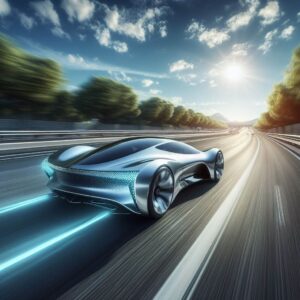The European Automobile Manufacturer’s Association (ACEA) plays a pivotal role in setting standards for automobiles and related products in Europe.
Among its many functions, ACEA provides a comprehensive classification system for engine oils, ensuring that these lubricants meet the performance, efficiency, and environmental requirements of various engines. The ACEA engine oil ratings are categorized based on engine types, with distinct classifications for gasoline engines (A ratings), passenger car diesel engines (B ratings), exhaust after-treatment compatible oils (C ratings), and heavy-duty diesel engines (E ratings). Each category is further subdivided to cater to specific driving conditions and requirements.

A Ratings: Gasoline Engine Oils
| Rating | Description |
|---|---|
| A1 | Suitable for small and compact cars designed for low friction and low viscosity oils, focusing on fuel economy. |
| A2 | Ideal for general driving conditions in medium to small-sized cars, such as daily commuting. |
| A3 | Designed for high-performance driving conditions, such as sports driving, requiring high durability and thermal stability. |
| A5 | Combines the fuel economy of A1 with the high-performance attributes of A3. |
B Ratings: Passenger Car Diesel Engine Oils
| Rating | Description |
|---|---|
| B1 | Geared towards economical driving, emphasizing fuel efficiency. |
| B3 | Suitable for high-performance driving conditions, akin to sports driving. |
| B4 | Specifically formulated for direct-injection diesel engines. |
| B5 | Balances the fuel economy of B1 with the high-performance characteristics of B3. |
C Ratings: Exhaust After-Treatment Compatible Oils
| Rating | Description |
|---|---|
| C1 | Features low viscosity and low friction properties, enhancing fuel efficiency and protecting exhaust after-treatment devices like DPF and TWC. |
| C2 | Similar to C1 but with extended service life for particulate filters. |
| C3 | Higher viscosity oil designed for high-performance engines, also extending the service life of exhaust after-treatment devices. |
| C4 | Engineered for high-performance engines requiring low viscosity and low friction, also extending exhaust after-treatment device life. |
| C5 | Essential for modern vehicles requiring low viscosity and low friction oils. |
How Can Understanding ACEA Engine Oil Ratings Help with Dominating Search Rankings and Traffic Growth?
Understanding ACEA engine oil ratings can increase website visibility and traffic for automotive companies. By creating content that educates consumers on the importance of these ratings, you can dominate search rankings and attract more visitors to your site. This can ultimately lead to increased sales and brand recognition.
E Ratings: Heavy-Duty Diesel Engine Oils
E ratings cater to heavy-duty diesel engines used in commercial vehicles such as trucks and construction machinery. These oils are designed to withstand severe operating conditions, providing engine protection, fuel efficiency, and reduced oil consumption, thereby lowering maintenance costs and maximizing performance.

The Importance of ACEA Ratings
Automakers rely on ACEA standards to optimize vehicle performance and longevity. Each engine oil rating is tailored to specific engine types and driving conditions, making the choice of the correct oil crucial. For instance, sports cars, which operate under high-temperature and high-friction conditions, are best served by A3-rated oils. In contrast, compact cars primarily used for commuting may benefit more from the fuel-saving properties of A1-rated oils.
For diesel engines, direct-injection models require the specialized formulation of B4-rated oils, while vehicles equipped with exhaust after-treatment systems must use C-rated oils to maintain the effectiveness of these devices. Heavy-duty commercial vehicles can significantly extend engine life and reduce maintenance costs by using E-rated oils.
Conclusion
The ACEA engine oil rating system is vital for maintaining the performance, efficiency, and environmental compliance of vehicles. By selecting the appropriate oil rating for their specific vehicle, drivers can ensure optimal engine performance and reduce overall maintenance costs. This system is continuously updated through collaboration between automotive manufacturers and oil producers, reflecting the latest technological advancements and regulatory requirements. Regularly checking and adhering to ACEA ratings is essential for vehicle owners to meet their vehicle’s needs and ensure long-term reliability.
Furthermore, the choice of engine oil contributes to improving fuel efficiency and reducing emissions, thus protecting the environment. Using the wrong oil can lead to decreased engine performance and increased environmental pollution, making it imperative to use the correct rating. Regular oil changes and inspections are also crucial in maintaining the long-term performance of the vehicle. These efforts not only provide economic benefits to the vehicle owner but also play a significant role in creating a sustainable environment.


